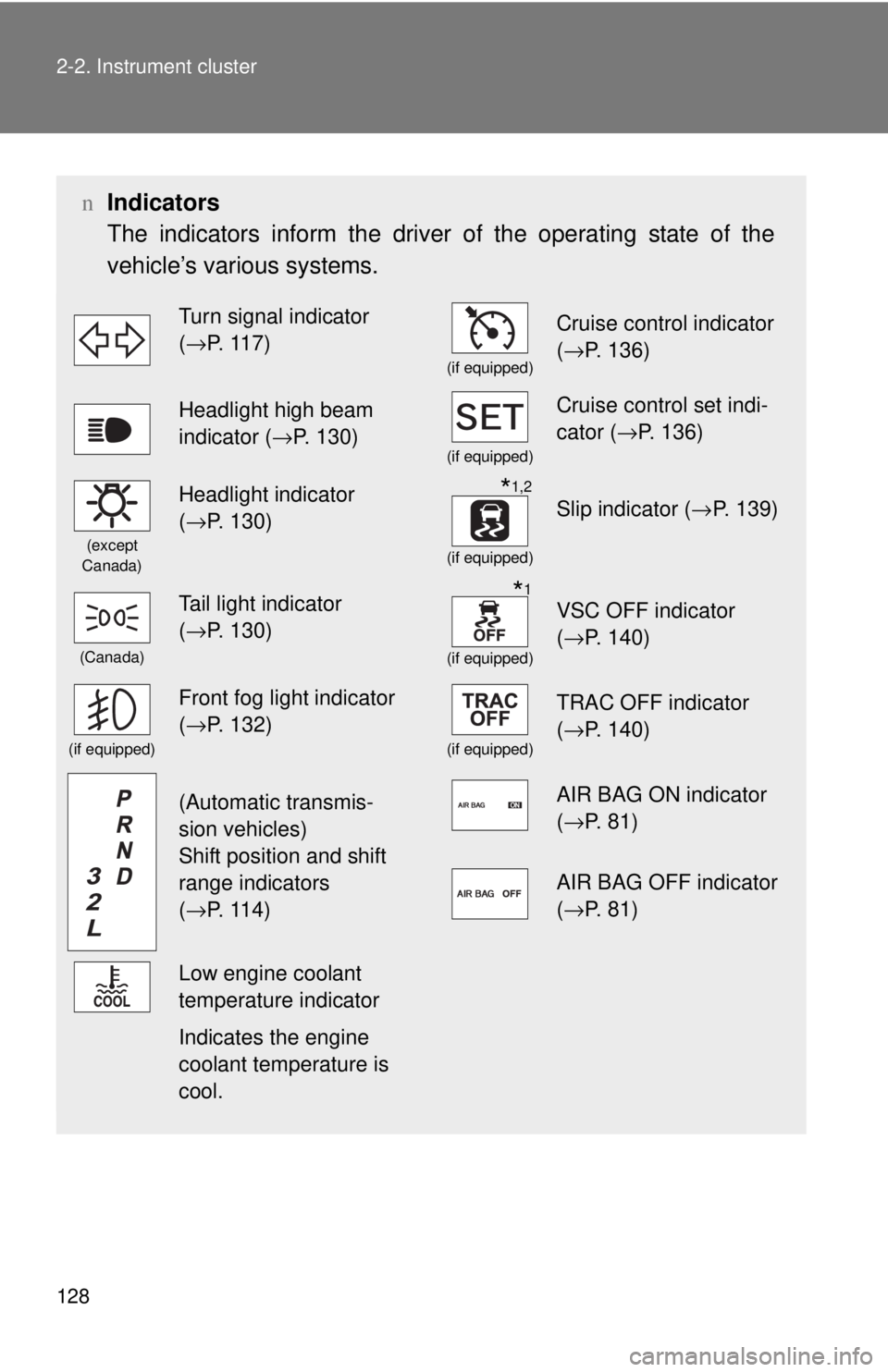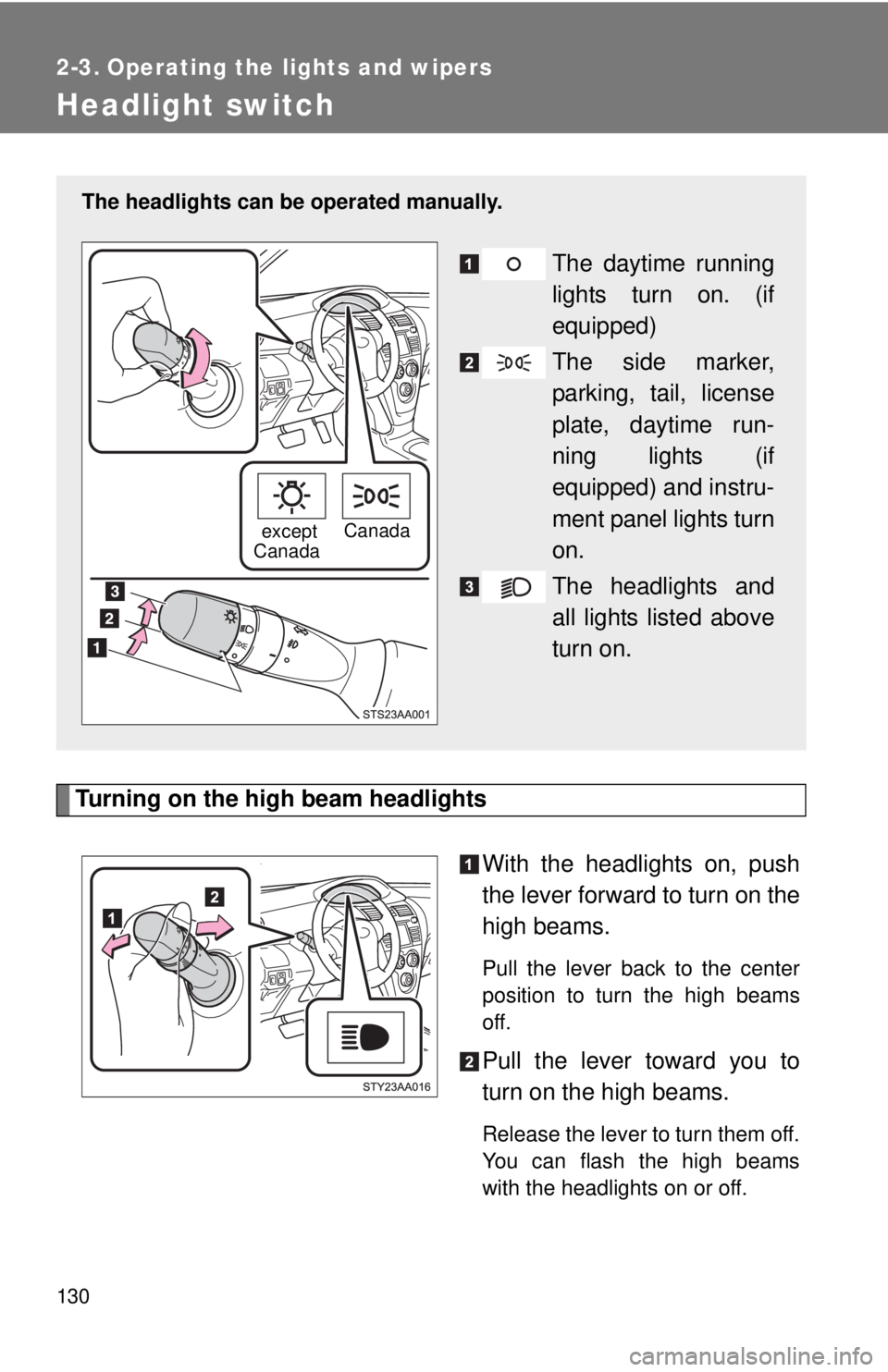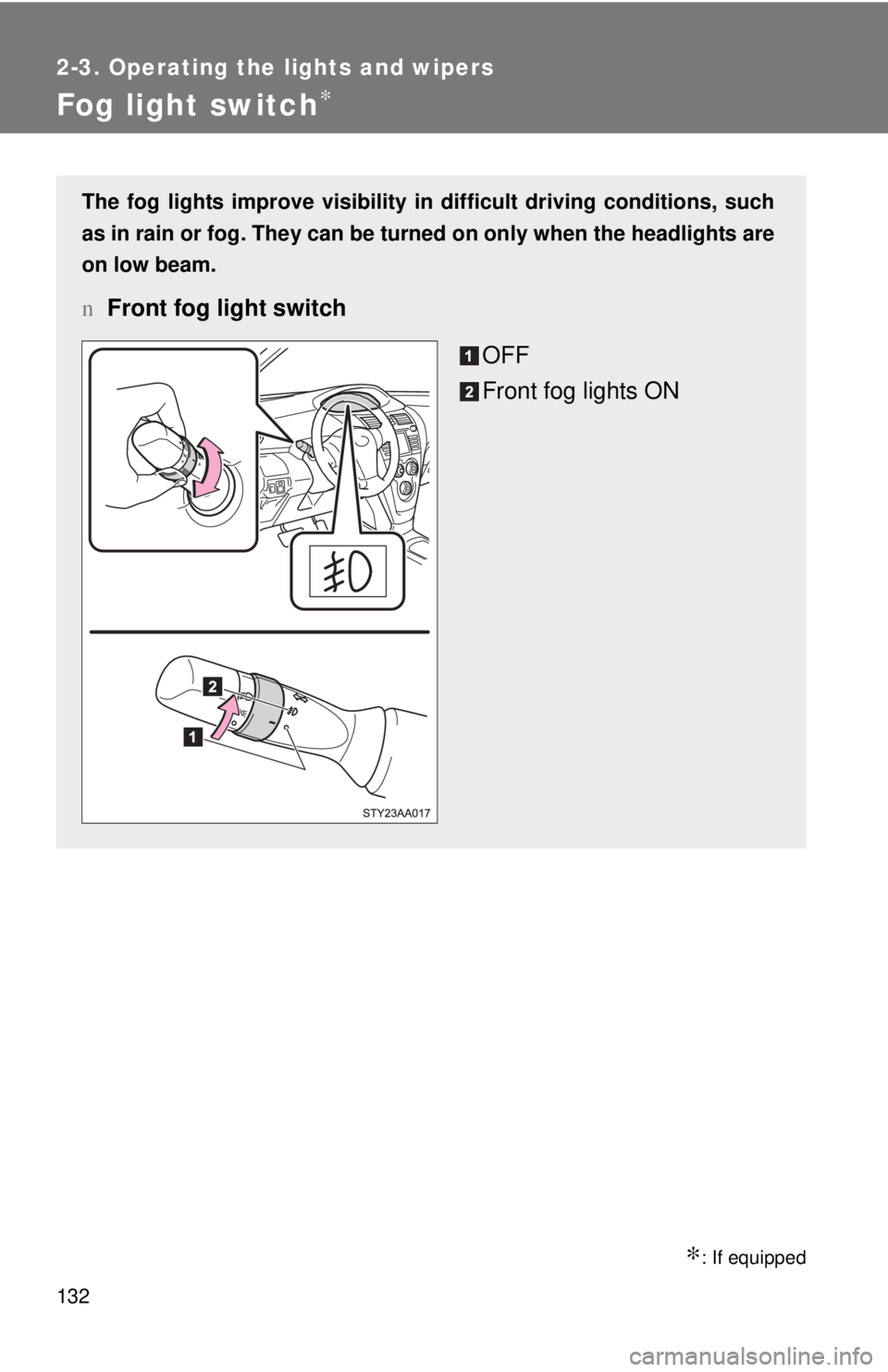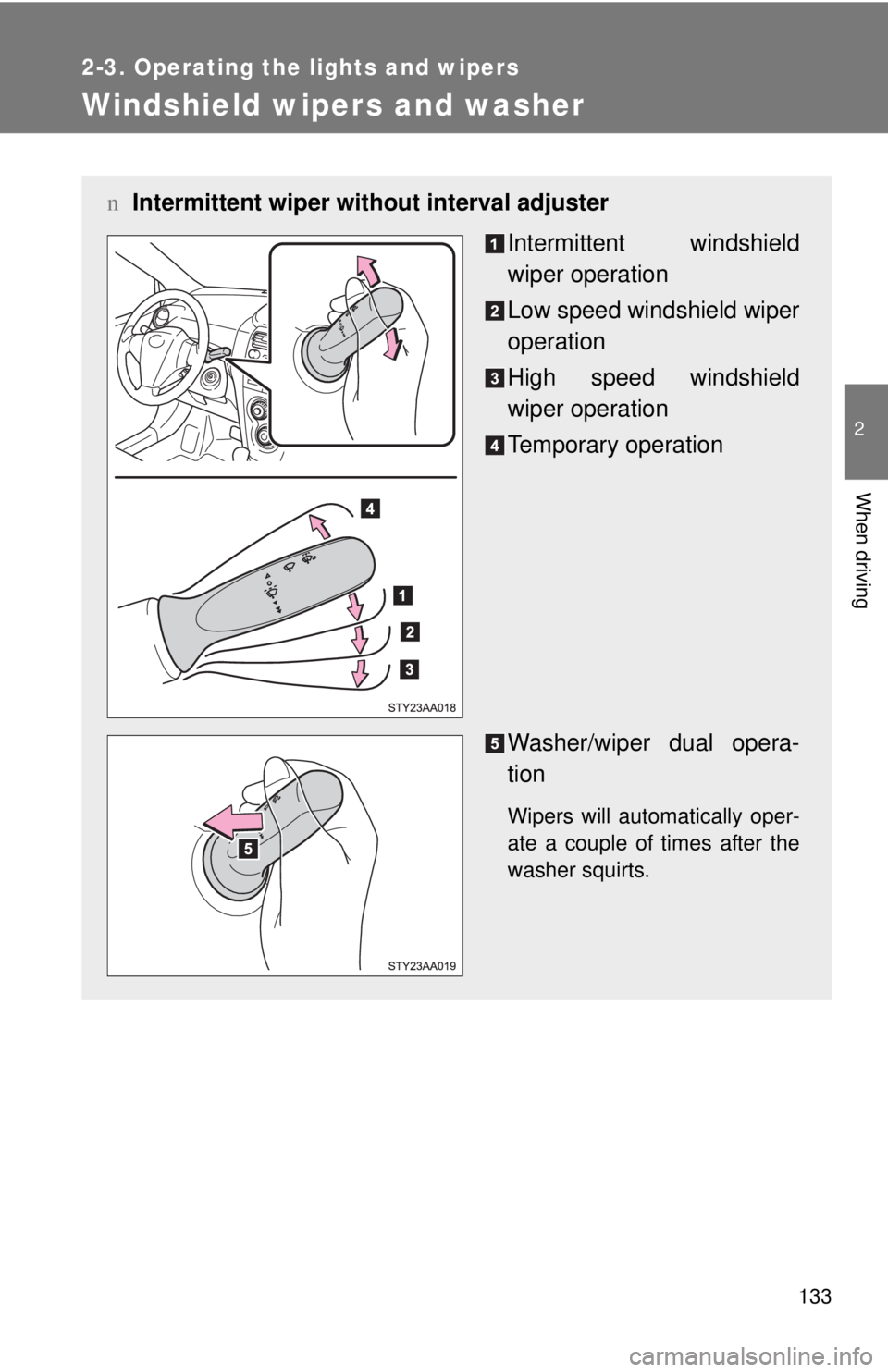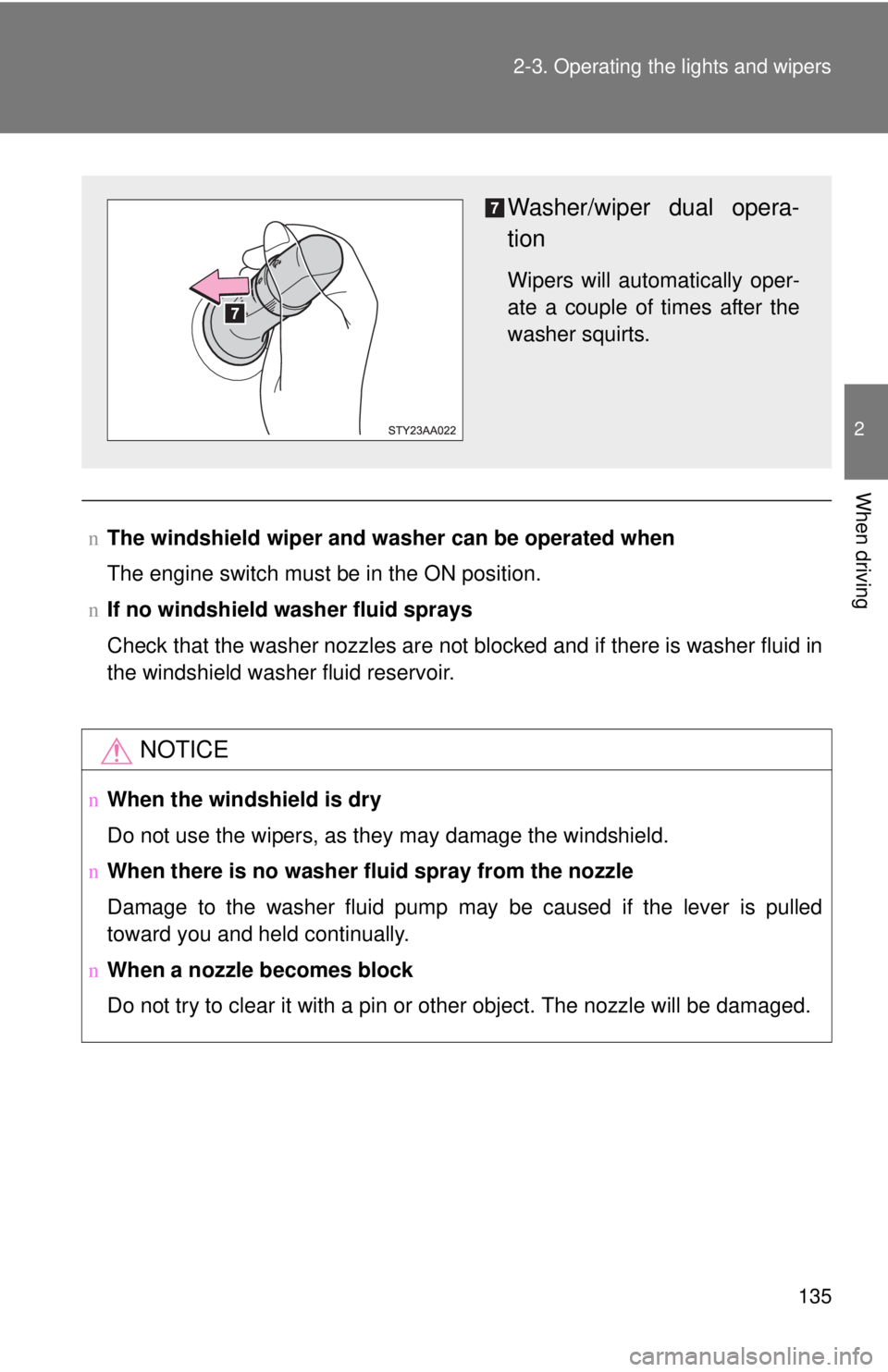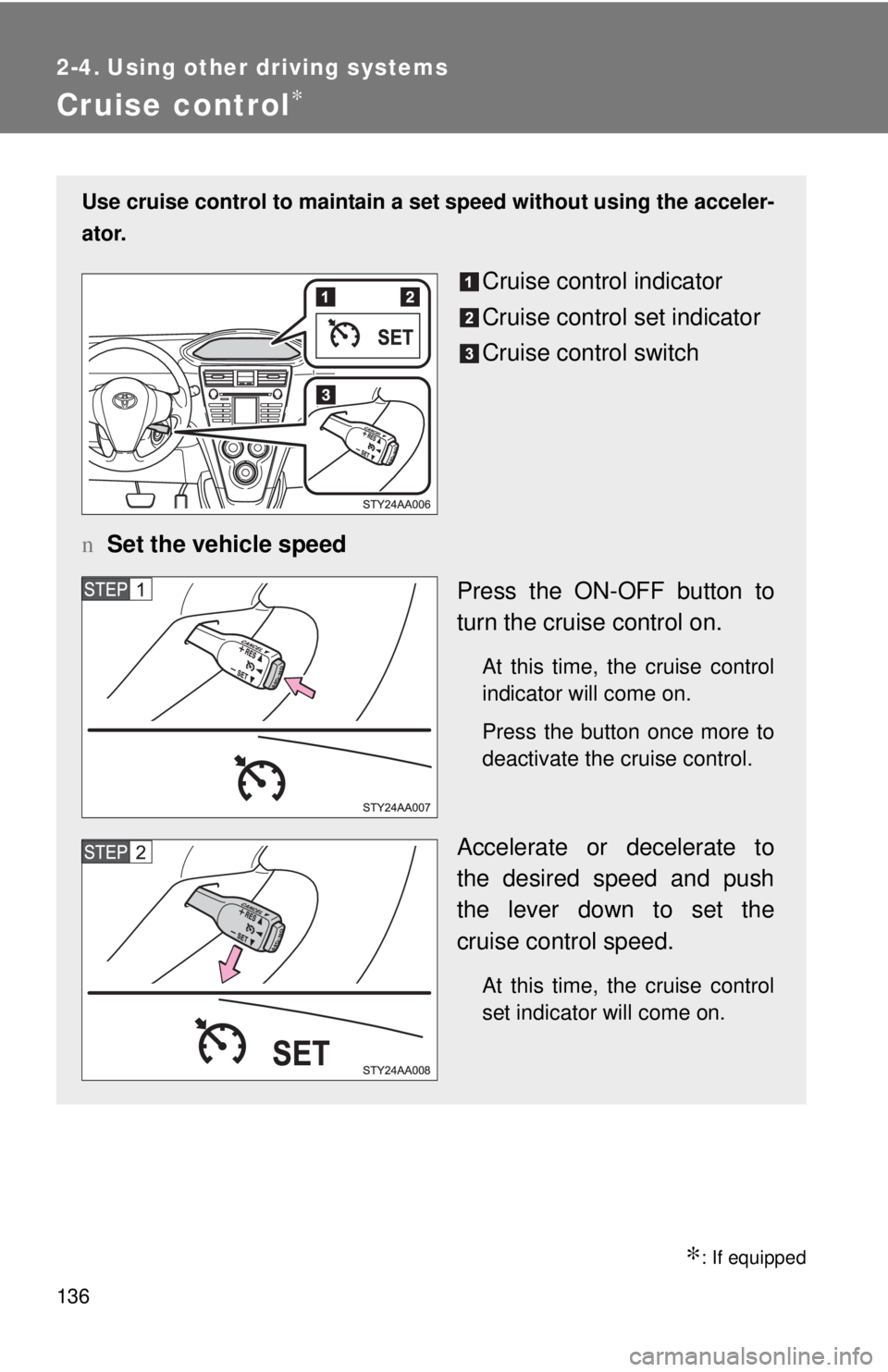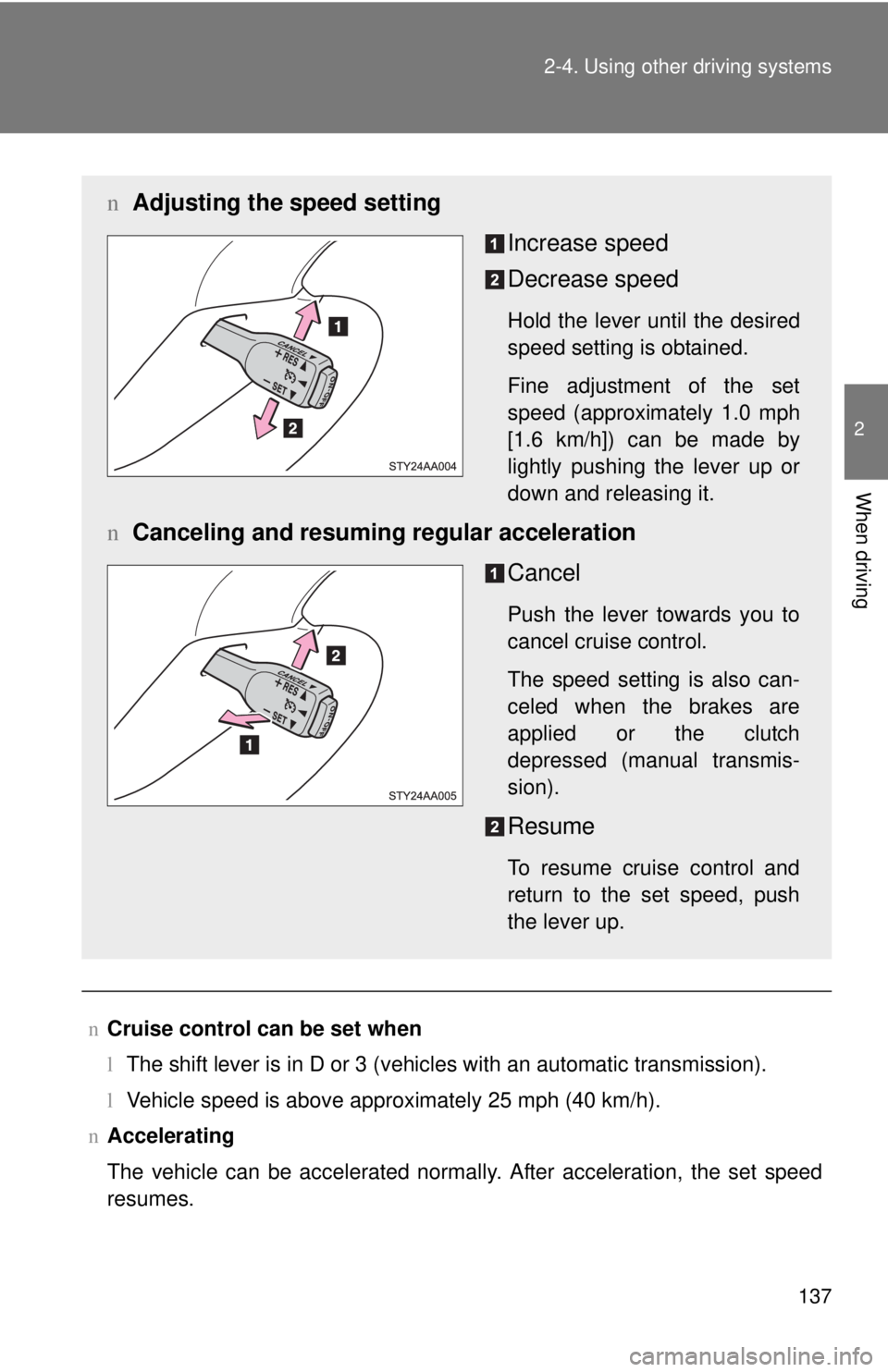TOYOTA YARIS SEDAN 2010 Owners Manual
YARIS SEDAN 2010
TOYOTA
TOYOTA
https://www.carmanualsonline.info/img/14/59282/w960_59282-0.png
TOYOTA YARIS SEDAN 2010 Owners Manual
Trending: wiper fluid, display, wiring, ABS, engine, auxiliary battery location, windshield wipers
Page 141 of 386
128 2-2. Instrument cluster
nIndicators
The indicators inform the driver of the operating state of the
vehicle’s various systems.
Turn signal indicator
(→P. 117)
(if equipped)
Cruise control indicator
( →P. 136)
Headlight high beam
indicator ( →P. 130)
(if equipped)
Cruise control set indi-
cator (→P. 136)
(except
Canada)
Headlight indicator
( →P. 130)*1,2
(if equipped)
Slip indicator ( →P. 139)
(Canada)
Tail light indicator
(→P. 130)*1
(if equipped)
VSC OFF indicator
( →P. 140)
(if equipped)
Front fog light indicator
(→P. 132)
(if equipped)
TRAC OFF indicator
( →P. 140)
(Automatic transmis-
sion vehicles)
Shift position and shift
range indicators
(→P. 114)AIR BAG ON indicator
( →P. 81)
AIR BAG OFF indicator
(→P. 81)
Low engine coolant
temperature indicator
Indicates the engine
coolant temperature is
cool.
Page 142 of 386
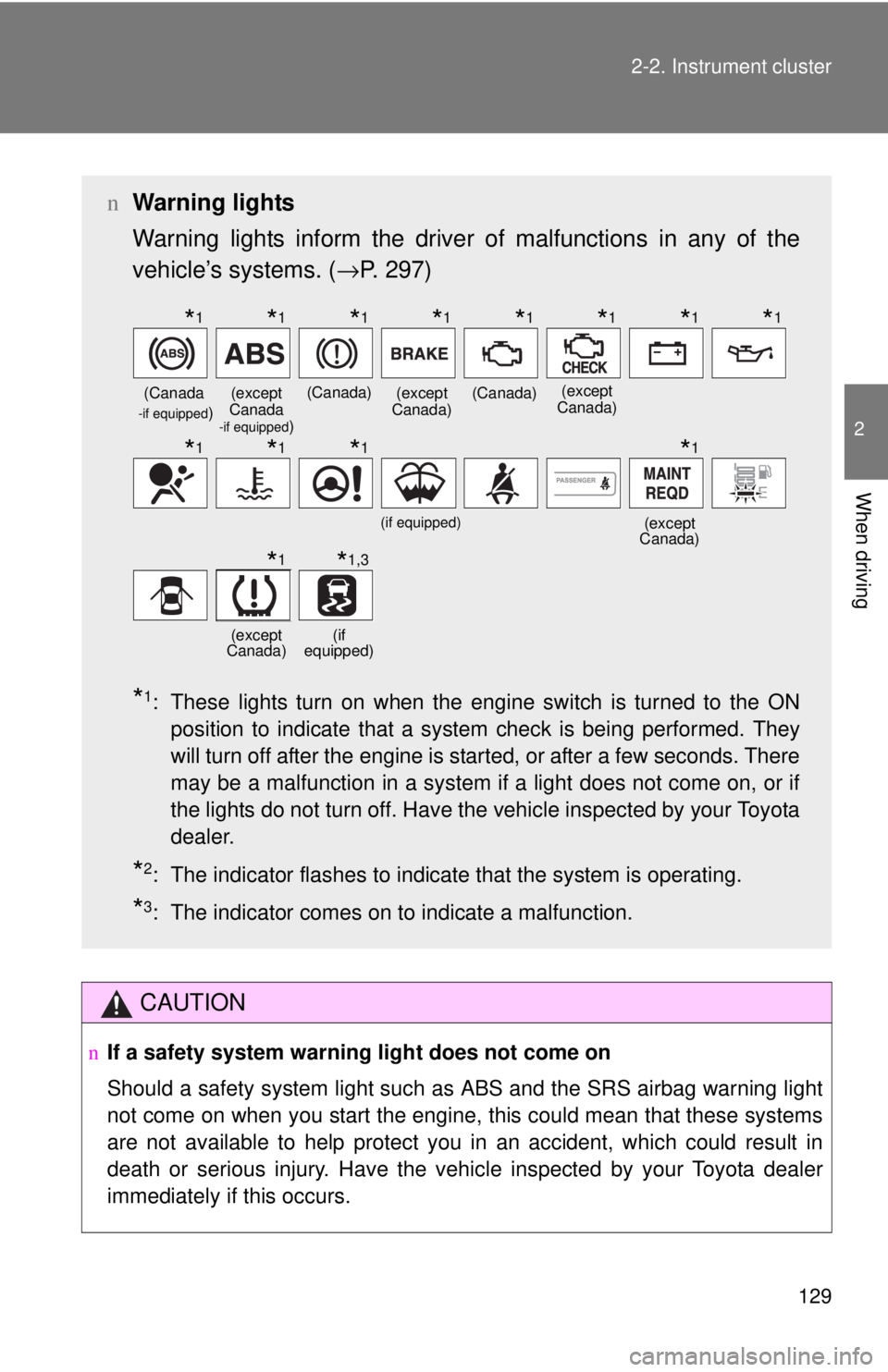
129
2-2. Instrument cluster
2
When driving
CAUTION
n
If a safety system warning light does not come on
Should a safety system light such as ABS and the SRS airbag warning light
not come on when you start the engine, this could mean that these systems
are not available to help protect you in an accident, which could result in
death or serious injury. Have the vehicle inspected by your Toyota dealer
immediately if this occurs.
n Warning lights
Warning lights inform the driver of malfunctions in any of the
vehicle’s systems. ( →P. 297)
*1: These lights turn on when the engine switch is turned to the ON
position to indicate that a system check is being performed. They
will turn off after the engine is started, or after a few seconds. There
may be a malfunction in a system if a light does not come on, or if
the lights do not turn off. Have the vehicle inspected by your Toyota
dealer.
*2: The indicator flashes to indicate that the system is operating.
*3: The indicator comes on to indicate a malfunction.
(Canada -if equipped)(except
Canada
-if equipped)
(Canada)(except
Canada)(Canada)(except
Canada)
(if equipped)(except
Canada)
(except
Canada)(if
equipped)
*1*1*1*1*1*1*1*1
*1*1*1*1
*1*1,3
Page 143 of 386
130
2-3. Operating the lights and wipers
Headlight switch
Turning on the high beam headlightsWith the headlights on, push
the lever forward to turn on the
high beams.
Pull the lever back to the center
position to turn the high beams
off.
Pull the lever toward you to
turn on the high beams.
Release the lever to turn them off.
You can flash the high beams
with the headlights on or off.
The headlights can be operated manually.
The daytime running
lights turn on. (if
equipped)
The side marker,
parking, tail, license
plate, daytime run-
ning lights (if
equipped) and instru-
ment panel lights turn
on.
The headlights and
all lights listed above
turn on.
except
Canada Canada
Page 144 of 386
131
2-3. Operating the lights and wipers
2
When driving
n
Daytime running light system (if equipped)
lTo make your vehicle more visible to other drivers, the headlights turn on
automatically (at a reduced intensity) whenever the engine is started and
the parking brake is released. Daytime running lights are not designed for
use at night.
l Compared to turning on the headlights, the daytime running light system
offers greater durability and consumes less electricity, so it can help
improve fuel economy.
n Light reminder buzzer
A buzzer sounds when the key is removed and the driver’s door is opened
while the lights are turned on.
NOTICE
nTo prevent battery discharge
Do not leave the lights on longer than necessary when the engine is not run-
ning.
Page 145 of 386
132
2-3. Operating the lights and wipers
Fog light switch∗
∗: If equipped
The fog lights improve visibility in difficult driving conditions, such
as in rain or fog. They can be turned on only when the headlights are
on low beam.
nFront fog light switch
OFF
Front fog lights ON
Page 146 of 386
133
2-3. Operating the lights and wipers
2
When driving
Windshield wipers and washer
nIntermittent wiper wit hout interval adjuster
Intermittent windshield
wiper operation
Low speed windshield wiper
operation
High speed windshield
wiper operation
Temporary operation
Washer/wiper dual opera-
tion
Wipers will automatically oper-
ate a couple of times after the
washer squirts.
Page 147 of 386
134 2-3. Operating the lights and wipers
nIntermittent wiper with interval adjuster
Wiper intervals can be adjusted for intermittent operation (when is
selected).
Intermittent windshield
wiper operation
Low speed windshield wiper
operation
High speed windshield
wiper operation
Temporary operation
Increases the intermittent
windshield wiper frequency
Decreases the intermittent
windshield wiper frequency
Page 148 of 386
135
2-3. Operating the lights and wipers
2
When driving
n
The windshield wiper and washer can be operated when
The engine switch must be in the ON position.
n If no windshield washer fluid sprays
Check that the washer nozzles are not blocked and if there is washer fluid in
the windshield washer fluid reservoir.
NOTICE
nWhen the windshield is dry
Do not use the wipers, as they may damage the windshield.
n When there is no washer fluid spray from the nozzle
Damage to the washer fluid pump may be caused if the lever is pulled
toward you and held continually.
n When a nozzle becomes block
Do not try to clear it with a pin or other object. The nozzle will be damaged.
Washer/wiper dual opera-
tion
Wipers will automatically oper-
ate a couple of times after the
washer squirts.
Page 149 of 386
136
2-4. Using other driving systems
Cruise control∗
∗: If equipped
Use cruise control to maintain a set speed without using the acceler-
ator.
Cruise control indicator
Cruise control set indicator
Cruise control switch
n Set the vehicle speed
Press the ON-OFF button to
turn the cruise control on.
At this time, the cruise control
indicator will come on.
Press the button once more to
deactivate the cruise control.
Accelerate or decelerate to
the desired speed and push
the lever down to set the
cruise control speed.
At this time, the cruise control
set indicator will come on.
Page 150 of 386
137
2-4. Using other
driving systems
2
When driving
nCruise control can be set when
lThe shift lever is in D or 3 (vehicles with an automatic transmission).
l Vehicle speed is above approximately 25 mph (40 km/h).
n Accelerating
The vehicle can be accelerated normally. After acceleration, the set speed
resumes.
n Adjusting the speed setting
Increase speed
Decrease speed
Hold the lever until the desired
speed setting is obtained.
Fine adjustment of the set
speed (approximately 1.0 mph
[1.6 km/h]) can be made by
lightly pushing the lever up or
down and releasing it.
nCanceling and resuming regular acceleration
Cancel
Push the lever towards you to
cancel cruise control.
The speed setting is also can-
celed when the brakes are
applied or the clutch
depressed (manual transmis-
sion).
Resume
To resume cruise control and
return to the set speed, push
the lever up.
Trending: change wheel, park assist, washer fluid, wheelbase, radio controls, spare tire location, fuel cap
